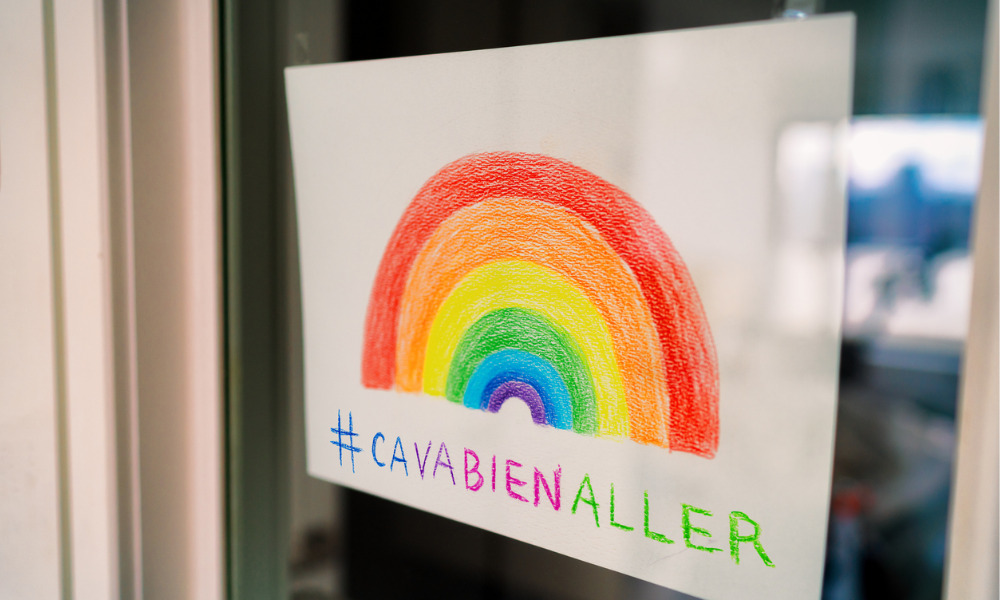The province has faced a number of issues since the start of the pandemic

Each province in Canada has faced its own difficulties amid the COVID-19 pandemic. Since the start of the pandemic, and until recently, Quebec had the highest number of active cases in the country.
During the first wave, Quebec faced huge crises in healthcare centres, notably long-term care homes.
Long-term care
A report on The Globe and Mail indicates that between Feb. 23 and July 11 (which the province defines as the first wave), 14 per cent of the province’s long-term care (LTC) centres had more than 50 COVID-19 cases per 100 beds.
This dropped to two per cent between Aug. 23 and Nov. 22 (defined as the second wave, still ongoing).
Furthermore, 40,000 residents of Quebec’s LTCs, which account for half of one percent of the province’s total population, made up 64 per cent of the deaths associated with the COVID-19 outbreak.
Around 4,000 people died due to COVID-19 related reasons in Quebec’s LTC centres and private seniors residences during the first wave. The silver lining here is that the crisis is, at least for the moment, seemingly better managed during this second wave, with current vaccination campaigns being aimed at LTC residents.
Broadly in Canada, by Jan. 5, 2021, LTCs and retirement homes reported 11 per cent of total Canadian COVID-19 cases and 73 per cent of total deaths, according to the National Institute of Aging (NIA) at Ryerson University.
READ MORE: Quebec OHS organization releases report on death of worker
CNESST
The Commission des normes, de l’équité, de la santé et de la sécurité du travail (CNESST), the organization which administers Quebec’s OHS safety plan, launched a campaign in October last year to increase awareness of COVID-19 prevention measures among workers in Quebec (more details available in French here).
On Jan 14., the CNESST announced that it had inspected a number of Dollarama locations.
The organization said that it has visited 68 Dollarama locations in Quebec since March 2020. It has issued 124 avis de correction (“correction notices”) since March 13. The CNESST says that in addition, nine Dollarama stores in the regions of Gaspésie, Yamaska, Saint-Jean-sur-le-Richelieu, Valleyfield, Saguenay and the Capitale-Nationale (national capital region) have been hit with 11 constats d’infraction (fines). Infractions were not specified.
On Jan 15., the CNESST also announced that it had undertaken a workplace inspection at a VEGPRO International worksite in Saint-Patrice-de-Sherrington which is currently facing a COVID-19 outbreak. Inspectors noted that the worksite is currently respecting COVID-19 guidelines and has allowed for the factory to continue operating under strict guidelines (more information in French here).
“The government wants to send a clear message: sanitary measures need to be respected in all workplaces to curtail the pandemic […] In all workplaces, big or small, we need to remain vigilant. No one is above the law,” said Jean Boulet, Quebec’s Minister of Labour (translation*).
READ MORE: What exactly is going on in Ontario?
Curfew in effect
On Jan. 9, Quebec was the first province in Canada to impose a curfew. Other countries around the world, notably France, have imposed curfews on residents in an effort to curb the spread of the disease.
Quebec’s premier, François Legault, announced that the curfew would be in effect in almost all of the province from 8pm to 5am each night. The curfew is currently planned to stay in place until at least Feb. 8.
As of Monday, Jan. 18, Quebec police had handed out almost 1,500 tickets for curfew violations since Jan. 11. On the first two days of the curfew, police handed out around 740 tickets according to a report on CTV News Montreal.
Despite protests against curfew measures, a recent poll on Huffington Post indicates that 74 per cent of those surveyed in Quebec said that they support the move, though only 57 per cent of Quebecers think that curfews are an effective way to reduce the spread of COVID-19.
READ MORE: 10 Canadian brands making face masks to support
Confinement
As of Jan. 19, there have been 245,734 total confirmed cases of COVID-19 in Quebec (with an additional 1,386 announced on that day); 1,500 hospitalizations (+9 on that day); and 9,142 (+55 on that day). In total, 217,575 people have recovered.
All of Quebec, except for the Cree Territory of James Bay and Nunavik, is on Maximum Alert (red zone) and has been since Jan. 9.
Measures in force include no visits between households (bar certain exceptions); indoor and outdoor gatherings are prohibited; the aforementioned curfew; travel between cities and regions is not recommended; non-priority commercial enterprises are closed until Feb. 8; teleworking in mandatory for people working in offices (unless presence is deemed necessary).
More information can be found here (and in French here).
During the first wave, Quebec had some of the strictest confinement measures in the country, in keeping with the gravity of the situation in the province.
*Original quote in French: « Le gouvernement veut lancer un message clair : les consignes sanitaires doivent être respectées par tous les milieux de travail pour endiguer la pandémie […] Dans tous les milieux de travail, petits et grands, il faut rester vigilants. Personne n’est au-dessus des lois. »





